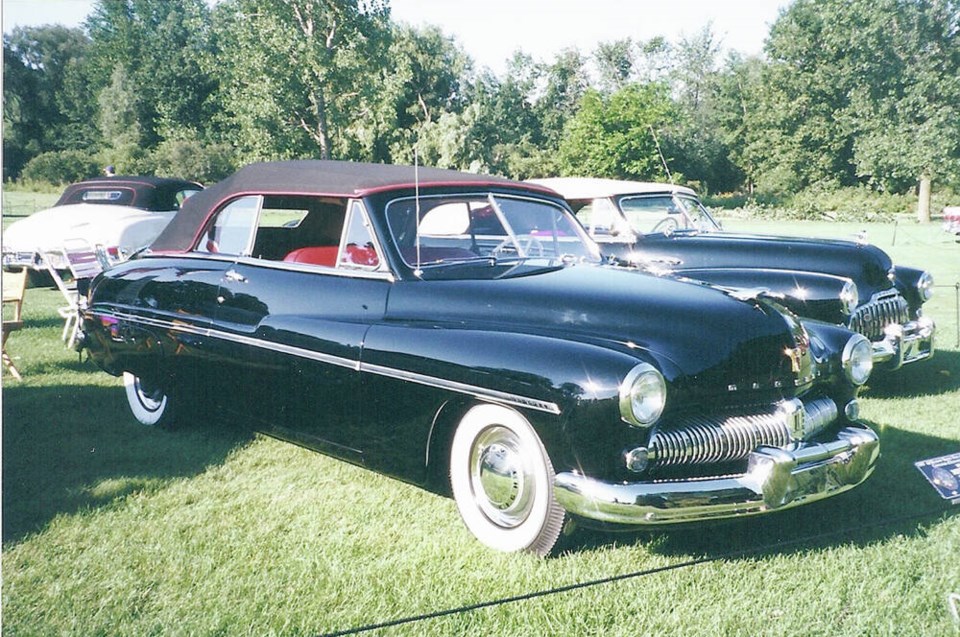The Ford Motor Co., established in 1903, was Henry Ford’s third attempt at starting a car company. This time it succeeded, and once Henry got his fabulously successful Model T launched in 1908 he was so proud of it he was content to have Ford remain a one-model company.
It followed this policy for 15 years until at the insistence of Edsel Ford, Henry’s only son and Ford Motor Co. president, Ford bought failed luxury car maker Lincoln Motor Co. in 1922.
There was, however, still a big gap between the Lincoln and Model T. This was alleviated somewhat in 1936 by the introduction of the Lincoln Zephyr, a lower priced Lincoln as a companion model for its large, expensive K-series V-12 that was selling slowly during the Depression.
Satisfied that Ford was on the right track, but keenly aware that it still wasn’t going model-for-model with General Motors and Chrysler Corp., Edsel added the Mercury nameplate in 1939. It was really just a more luxurious “senior Ford” but it expanded the company’s line-up nicely and soon became a sales success.
Following the end of the Second World War’s interruption in car production from 1942 to 1945 the post-war 1946 Mercury was, like others, a re-run of the pre-war design. It was still seen as a plusher Ford, but that was destined to change with the introduction of the all-new 1949 models.
That’s when Mercury made the big break from its early Ford heritage and became a more significant member of the Ford family. It was now more like a “junior Lincoln” than a “senior Ford,” with styling clearly distinctive from its former Ford lookalike.
And the change wasn’t just in styling. Like other company models, Mercury finally discarded the outmoded transverse leaf springs that traced their lineage back almost to Ford’s beginning. The front beam axle was replaced by A-arms and coil springs and at the rear by parallel semi-elliptic springs.
Plans to move Mercury closer to Lincoln had been telegraphed in 1947 with the creation of the Lincoln-Mercury Division. It was clearly confirmed when the 1949 Mercury was introduced in April 1948 with the same inner body as the standard, restyled Lincoln from the cowl back. For the Canadian market there was also a corporate clone called the Monarch, identified by a different grille and trim,
Unlike the squared up horizontal lines of the new 1949 Ford, the Mercurys and Lincolns were softer and less angular. Mercury’s wide, rounded, vertical-bar grille actually looked more attractive than the Lincoln’s slanted, down-in-the-mouth appearance and sad-eyed sunken headlamps.
The Mercury stretched 5,253 mm (206.8 in) overall and had a 2,997 mm (118 in.) wheelbase, 102 mm (4 in.) more than the Ford’s, and only 76 mm (3 in.) less than the standard Lincoln. Body lines tapered nicely to the rear, and the almost full length side-spear chrome strips and full wheel skirts gave it a long, low appearance.
It came as a two- and four-door sedan, convertible and a two-door woody wagon that was a Ford from the cowl rearward. The sedan’s rear doors were still hinged at the rear, commonly referred to as “suicide doors.”
Under the hood was a 4.2 litre (255.4 cu in.) side valve V-8, the Ford engine with a 6.3 mm (1/4 in.) cylinder bore increase and developing 110 horsepower compared with the Ford’s 100. A welcome service improvement was relocating the ignition distributor from low on the front of the engine block where it was driven directly off the camshaft to a position at the front of the right cylinder head.
The transmission was a column shifted three-speed, with overdrive optional. Although competition from General Motors offered automatic transmissions, Mercury wouldn’t get its “Merc-O-Matic” automatic until 1951.
The 1949 Mercury and ‘50 and ‘51 models received belated and unexpected fame when a customized ‘49 was driven by legendary and brooding actor James Dean in the 1955 movie, Rebel Without A Cause. It made the Mercury the darling of the amateur and professional custom car set.
Mercurys were chopped (removing sections of the pillars to lower the roof) and lowered on their springs, and of course got de rigueur dual exhausts with their burbling “Hollywood” mufflers. Among the many appearance modifications were smoothing the body seams with lead, earning customized Mercurys their “Lead Sled” nickname. They were finished off with brilliant paint jobs and white-wall tires.
This was far from the more staid image that Ford had planned for Mercury. They saw it as catering to prosperous middle-class buyers age 35 and up who wanted more prestige than was offered by a Ford, but were not quite ready to step up to a Lincoln. But that didn’t evolve, and Mr. Dean did gave Mercury some wonderful publicity.



